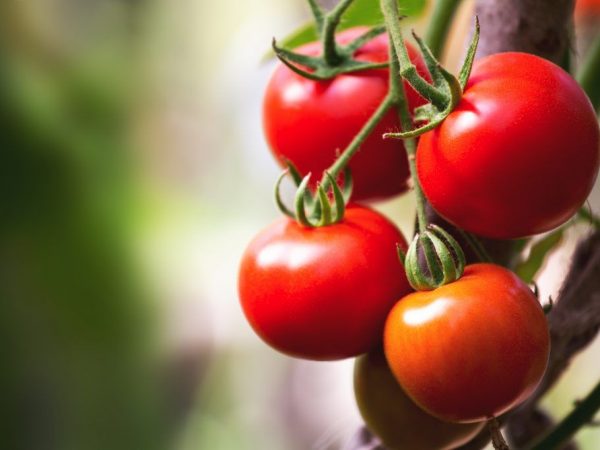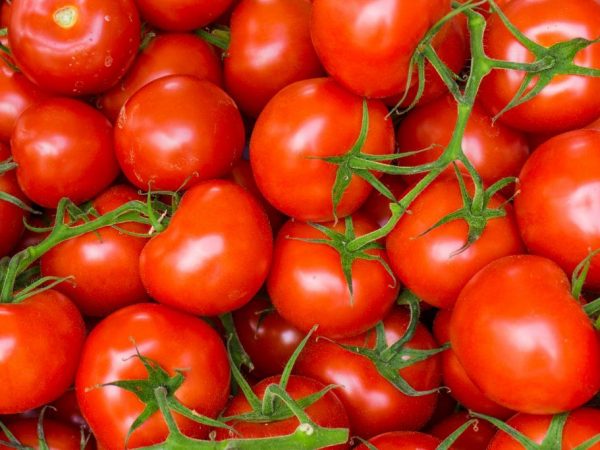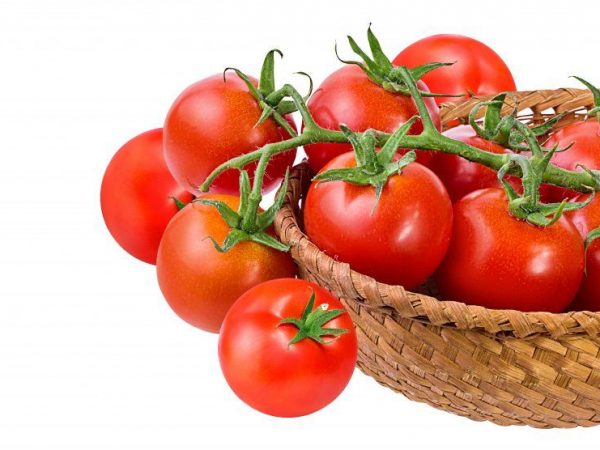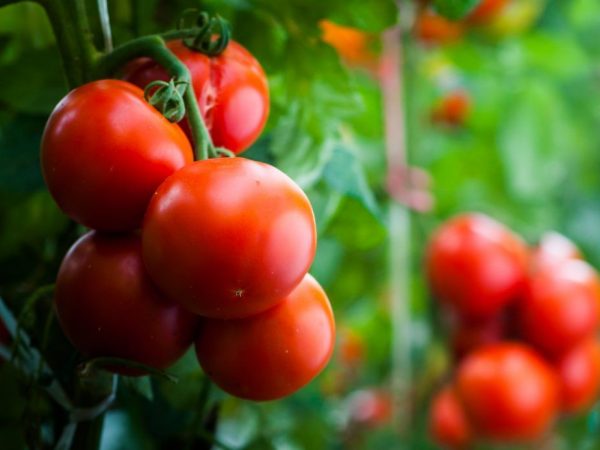Description of tomatoes varieties Apples in the snow
Tomatoes have been known to Europeans since the 16th century. They were used as an ornamental culture, medicine, and even tried to use them for making poisons. Only from the 18th century the taste qualities of tomatoes were appreciated, and they began to be widely used in food. Over the past decades, breeders have been working on obtaining varieties of tomatoes that will be resistant to unfavorable climatic conditions, but at the same time retain great taste. One of these varieties of Russian selection is the apples in the snow tomato.

Tomatoes varieties Apples in the snow
The name of a popular variety of tomatoes indicates, firstly, the regionalization in regions with a short summer and, secondly, the peculiarity of the shape and color of the plant. Few remember that the name of the plant - tomato - is translated from Italian as "golden apple".
Characteristics of the variety
Tomatoes varieties Apples in the snow - a low plant, from 40 to 70 cm. The variety belongs to determinant, which means that there is no great need to form a bush by pinching. It is enough to remove the stepchildren up to 4-5 sheets and allow the tassels to be tied.
The official characteristic says that the bush of this tomato variety forms 5-7 clusters of dense, rounded fruits. Berries are medium-sized, uniform in color, weighing 50-70 g. The skin is thin, but strong, not amenable to cracking. Vegetable growers note the excellent taste of tomato Apples in the snow: sweetish, with a slight sourness.
Tomatoes Apples on the snow are early ripe, have a high yield.

Characteristics of the variety Apples in the snow
If the seeds are sown in a greenhouse or at home in March, then the first harvest can be obtained at the end of June. In mid-July, the main crop is harvested: from each bush - 2-2.5 kg of tomatoes. The variety is distinguished by amicable ripening of fruits. In August, the tops are already being removed from the beds.
Experts note the decorative variety: small compact bushes with dark green leaves and bright red fruits will decorate not only a vegetable garden, a summer cottage, but also a balcony, a veranda, even a windowsill. During the ripening period, the plant bush really resembles a branched apple tree, strewn with bright fruits.
Application of the variety
Apples in the snow are Siberian tomatoes, bred by amateur breeders for areas with short summers. Plants withstand spring frosts, daily temperature drops. They can be grown both in greenhouses and outdoors.
Due to their excellent taste, these tomatoes are eaten raw, for making salads. Also used in preparations for the winter: for pickles, making tomato juice, mashed potatoes, canned salads, even frozen.
Advantages and disadvantages
Tomatoes are among the favorite varieties for cultivation in Siberia, Altai, and Central Russia. Many gardeners prefer this particular variety. The list of the benefits of this culture is very compelling:
- short growing season: up to 90 days (February – March to June – July);
- great taste;
- a fairly high yield for an early variety of tomatoes with a low stem: 10 kg per 1 sq. m;
- resistance to many diseases of vegetable plants, for example, top rot.
The only drawback of the culture, gardeners call susceptibility to late blight.

Advantages and disadvantages of apples varieties in the snow
This is a dangerous fungal disease that can kill most of the crop. But since the fruits ripen early enough, it is possible to avoid outbreaks of the disease, especially common during the summer rains and fogs.
Growing features
Caring for tomatoes Apples in the snow does not differ significantly from agricultural technology of any kind. Particular attention should be paid to factors such as:
- soil quality,
- watering,
- loosening and hilling,
- plant feeding.
Seedlings (less often seeds) are planted in light, loose soil containing humus. The predecessors and neighbors on the site are important. Vegetable growers do not recommend growing a crop in the same place for 2 years in a row, you need to take a break of 3-4 years. The predecessors and neighbors should not be other representatives of the nightshade (potatoes, eggplants). The best option is onions, carrots, legumes, representatives of the pumpkin plant family.
Leaving after disembarkation
It is not recommended to water the tomatoes immediately after planting the seedlings. It is necessary to give time to young bushes to take root. Watering starts 2 weeks after planting. Avoid irrigating the beds with sprinkling so that drops of water do not fall on the leaves: this can lead to falling flowers, the spread of diseases. During the period of fruit ripening, it is necessary to moisten the soil systematically, avoiding drying out. The ripening time, taste and integrity of the berries depend on the irrigation regime.

Tomato care
After each irrigation, it is necessary to loosen the soil to saturate it with oxygen. Experienced gardeners recommend spilling bushes 2-3 times a season: this helps to strengthen the root system, better nutrition. Mulching will help to preserve moisture (covering the soil with straw, sawdust, cut grass).
Tomatoes are responsive to soil fertilization. Immediately after planting, it is advisable to stimulate growth by applying nitrogen-containing fertilizers. With the onset of flowering and fruit setting, the plant is fed with phosphorus and potassium.
Diseases and pests
Tomatoes Apples in the snow are resistant to viral diseases, but are easily affected by late blight. Disease prevention consists in loosening the soil, timely destruction of weeds, preventive treatment of bushes with Bordeaux liquid or other preparations that contain copper. Leaves and shoots with phytophthora spots must be cut off and burned.
In addition to diseases, pests can also significantly affect productivity: aphids, spider mites, thrips. Preventive measure - treatment of shoots with a weakly concentrated solution of potassium permanganate. In case of damage to plants by insects, insecticides are used.
Tomatoes Apples in the snow are popular among vegetable growers. On many forums, gardeners and summer residents are asked to give a description and recommendations for care on the apples in the snow tomato.


